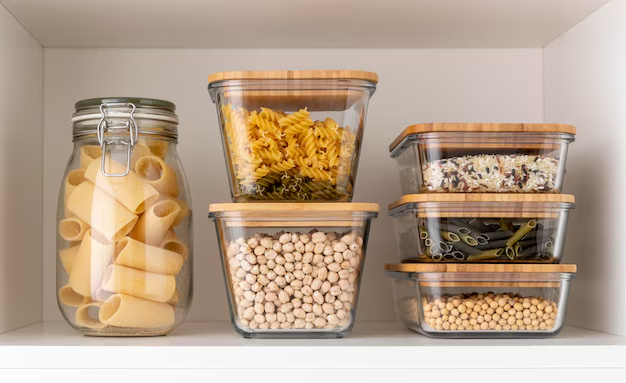How Long Can You Safely Store Leftovers in the Refrigerator?
Ever opened your fridge, sniffed a container of last week's lasagna, and wondered, "Is this still okay to eat?" Navigating food safety can feel daunting, but understanding how long leftovers last in the refrigerator can save you from potential health risks and food waste. Let’s explore the ins and outs of storing leftovers, ensuring you and your family can enjoy delicious meals safely.
Understanding Food Storage: The Basics
Proper food storage is a crucial aspect of food safety and helps extend the shelf life of your leftovers. Refrigeration slows the growth of bacteria, but it doesn’t completely stop it. That's why knowing how long different foods are safe to eat is essential. Here, we'll cover general guidelines, common questions, and practical tips for storing food.
The 2-Hour Rule: When to Refrigerate
The first rule of thumb is the 2-hour rule. Perishable food should not be left at room temperature for more than two hours. This guideline helps prevent bacteria from multiplying to harmful levels. If the room temperature is above 90°F (32°C), such as during a summer picnic, reduce this time to just one hour.
Refrigerator Temperature: Setting the Scene
To keep food safe, your refrigerator should be set at 40°F (4°C) or below. This temperature range is effective in slowing bacteria growth, maintaining food quality, and preserving nutrients. Regularly check your fridge's temperature with a reliable thermometer to ensure it stays within this safe zone.
How Long Are Various Leftovers Safe to Eat?
Different types of food spoil at different rates. Let’s break down the general shelf life of some common leftovers.
Cooked Meat and Poultry
Storage Time: 3-4 days
Cooked meats like chicken, beef, and pork are best consumed within this timeframe. Extend their freshness by packing them in airtight containers or wrapping them tightly with aluminum foil or plastic wrap.
Soups and Stews
Storage Time: 3-4 days
Soups and stews, especially those containing meat, follow similar timelines. Ensure they’re stored in shallow containers for quicker cooling and safe reheating.
Pasta and Rice
Storage Time: 3-5 days
Cooked pasta and rice can last a little longer in the fridge. These should be cooled quickly after cooking to maintain quality and safety.
Seafood
Storage Time: 1-2 days
Seafood remains fresh for a shorter period due to its delicate nature. Consuming fish and shellfish within this time prevents the risk of foodborne illnesses.
Pizza
Storage Time: 3-4 days
Believe it or not, leftover pizza can stay fresh for several days when stored properly. Keeping it in airtight storage helps preserve its taste and texture.
Mixed Dishes
Storage Time: 3-4 days
Mixed dishes like casseroles, lasagnas, or pot pies should be eaten within this period. Storing them in airtight containers is key to longevity.
Fresh Fruits and Vegetables
These can vary quite a bit. Leafy greens might last 3-5 days, while heartier vegetables such as carrots and celery could extend up to 2 weeks. It's always best to store them in the crisper drawer to maintain their freshness.
Practical Tips for Storing Leftovers
Having a strategy is important when storing leftovers, but knowing how to efficiently save and reheat your food is paramount. Here are some practical tips:
- Label Everything: Note the date when you store leftovers to keep track of their freshness.
- Use Airtight Containers: These help prevent moisture loss and minimize contamination.
- Follow the FIFO Rule: First-In, First-Out should be your mantra—eat the oldest items first.
- Divide Large Quantities: Separate big batches into smaller portions to promote even cooling.
Reheating and Food Safety
Reheating food safely involves bringing it back to at least 165°F (74°C). This temperature ensures bacteria present are killed, providing a safer eating experience. When reheating sauces, soups, and gravies, slowly bring them to a rolling boil.
Correct Microwave Tips:
- Stir food halfway to distribute heat evenly.
- Let food stand for a minute for the heat to equalize throughout.
- Cover dishes to retain moisture and prevent splatter.
Frequently Asked Questions (FAQs)
What about Freezing Leftovers?
Freezing protects food for longer durations—a fantastic option if you can't finish leftovers in the suggested refrigerator timeframe. Most foods maintain quality in the freezer for 1-3 months.
How Can You Identify Spoiled Food?
Pay attention to smell, texture, and appearance. If food exhibits a sour smell, off texture, or unusual color, it’s best to err on the side of caution and discard it.
Can You Store Hot Food in the Fridge?
While it’s commonly believed that hot food must cool completely before refrigerating, placing it in shallow containers allows for safe, quick cooling.
Navigating Leftover Safety: A Handy Summary
Here's a quick reference to help you remember how long different leftovers remain good in the refrigerator:
- 🥩 Cooked Meat & Poultry: 3-4 days
- 🍲 Soups & Stews: 3-4 days
- 🍝 Pasta & Rice: 3-5 days
- 🐟 Seafood: 1-2 days
- 🍕 Pizza: 3-4 days
- 🥘 Mixed Dishes: 3-4 days
- 🥗 Fruits & Vegetables: Varies; up to 1-2 weeks depending on the type
Embracing Best Practices for Food Safety
Understanding how long you can keep leftovers safe in the refrigerator is an essential part of food management. By applying basic refrigeration guidelines, recognizing signs of spoilage, and properly reheating food, you ensure that meals remain both delicious and safe. These practices not only protect your health but also reduce food waste, promoting a more sustainable lifestyle. Bon appétit!
